America's Greenest Colleges 2014: The Top 10
The colleges at the top of our annual "Cool Schools" ranking have sustainability woven into their very culture.
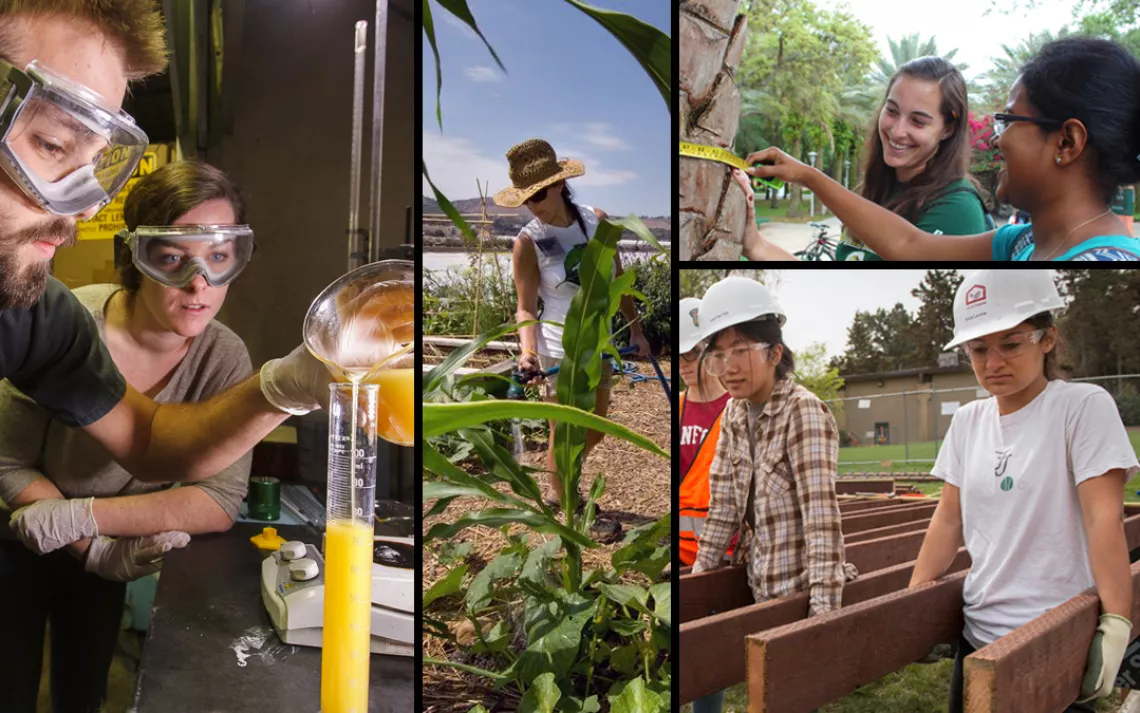
The colleges at the top of our annual “Cool Schools” ranking are so dedicated to greening every level of their operation—from energy usage to recycling to food sourcing to curriculum—that sustainability has become woven into their very culture. Join Sierra in congratulating 2014’s most environmentally responsible universities. (Scores are out of 1,000 points; click here for our ranking methodology.)

#10 GEORGIA INSTITUTE OF TECHNOLOGY
SCORE: 740.93 | ATLANTA, GEORGIA
Georgia Tech's 500-vehicle fleet includes 150 that run on alternative fuels—one of the many ways the university encourages commuters to reduce their emissions. The school also earned big points for its construction and demolition practices, which focus on diverting as much waste and incorporating as many sustainable features as possible—16 of its buildings are LEED certified. To reduce stormwater runoff, the school has added pervious surfaces, removed paved parking lots, taken on 13 campus reforestation projects, and installed cisterns that, together, can hold 2.4 million gallons of rainwater. Above, students and faculty work in the school's community garden, where more than a dozen crops grow.
Photo courtesy of Rob Felt/Georgia Institute of Technology
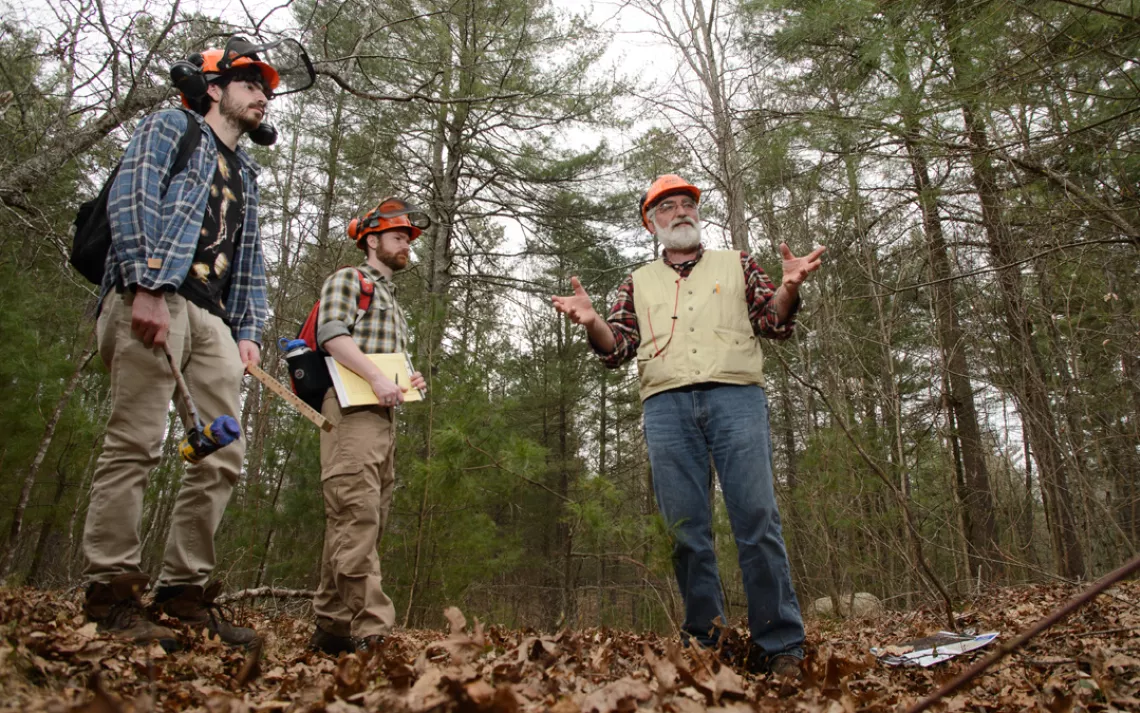
#9 UNIVERSITY OF CONNECTICUT
SCORE: 743.05 | STORRS, CONNECTICUT
Last year's coolest school offers hundreds of classes related to environmentalism as part of its commitment to instilling eco-literacy in its student body. To that end, UConn's Environmental Literacy Workgroup develops new classes, hosts forums, and nudges graduates into green careers. The university also has a huge water-conservation initiative, runs car- and bike-sharing programs, and serves food that's mostly local and seasonal, with lots of vegetarian options. Above, Thomas Worthey, an assistant extension professor, leads an "exurban silviculture" class, during which students create management plans for tree plots in the school’s forest. The Arbor Day Foundation has named UConn a Tree Campus USA.
Photo courtesy of Peter Morenus/University of Connecticut

#8 GREEN MOUNTAIN COLLEGE
SCORE: 746.86 | POULTNEY, VERMONT
GMC did notably better than other colleges in terms of making sure that its financial investments do no harm. Which makes sense, given that the school's mission statement identifies the environment as the unifying theme underlying its academic programs. The classes here rarely stray from ecological themes, and the energy sources are clean, including a 150-kilowatt, biomass-fueled steam turbine to generate electricity, a new 156-kilowatt solar array, and a biomass plant that turns locally sourced wood chips into heat. Above, a student works on the school’s Cerridwen Farm; instead of tractors, horses plow GMC's fields.
Photo courtesy of Eric Hudiburg/Green Mountain College
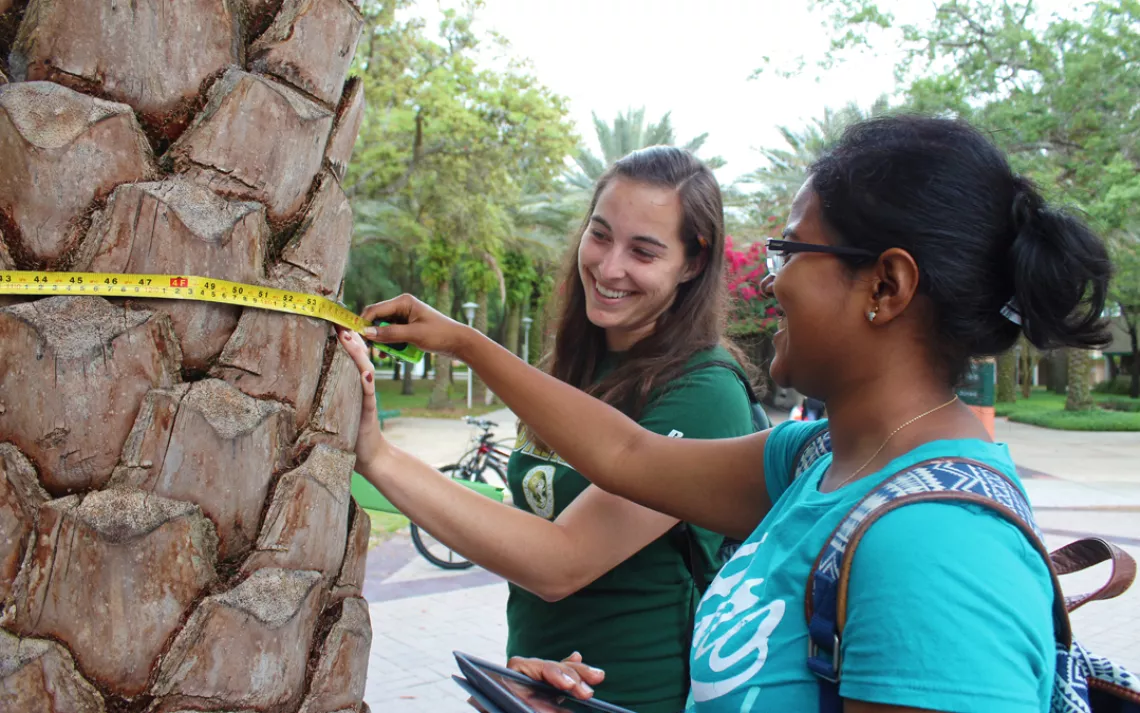
#7 UNIVERSITY OF SOUTH FLORIDA
SCORE: 747.14 | TAMPA, FLORIDA
USF's eco-assets include America's first 20,000-watt solar charging station for electric vehicles; the Clean Energy Research Center, where students work on fuel-cell and solar technologies; and the Power Center for Utility Explorations, which builds smart grids. Campus buildings are designed to prevent water waste, and students voluntarily pay a fee that goes toward conservation initiatives. The school's 24-year-old recycling program has diverted more than 48 tons of aluminum and 9,700 tons of paper from local landfills. Above, students inventory campus trees.
Photo courtesy of Catherine Lim/University of South Florida
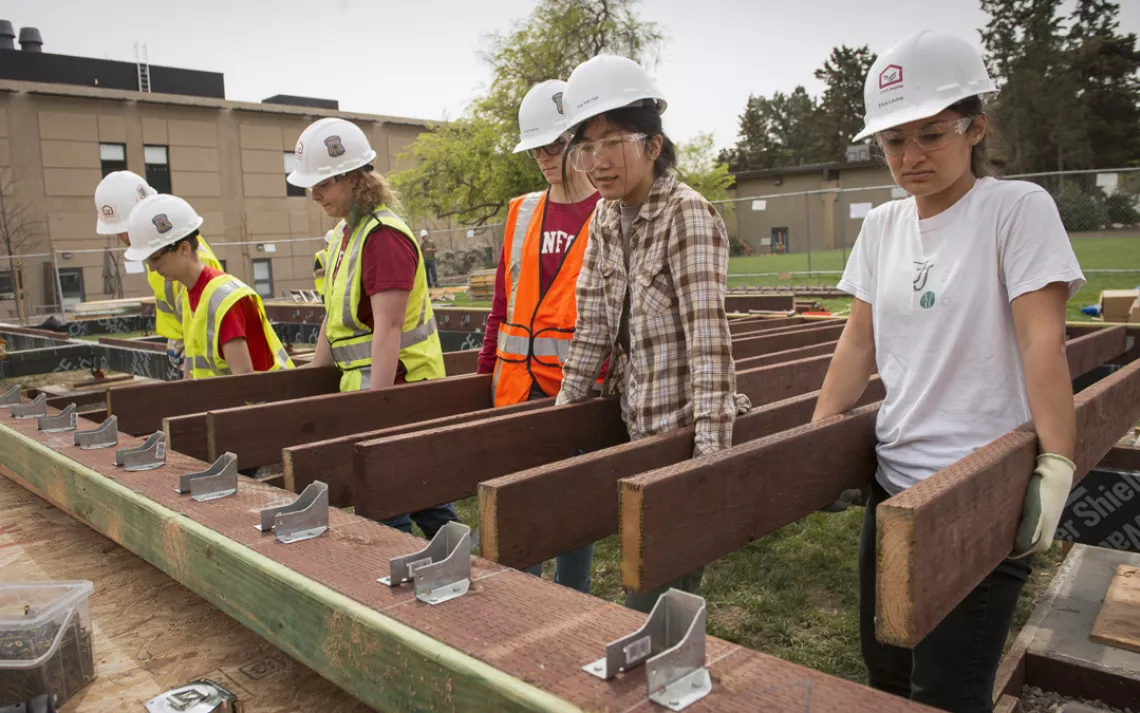
#6 STANFORD UNIVERSITY
SCORE: 750.13 | STANFORD, CALIFORNIA
Stanford scored big in lots of areas but especially in purchasing, transportation, and water conservation. The private school uses its financial power to buy minimally packaged items, products made from recycled materials, and Green Seal-certified cleaning solutions. Nearly a third of the university's 1,000-vehicle public transit fleet is electric. Water-saving measures include reverse-osmosis reuse, which preserves 180,000 gallons annually. Stanford is also divesting its $18 billion endowment of direct investments in the coal industry. Above, students prepare to place floor joists to support a deck for Stanford's Solar Decathlon house.
Photo courtesy of Linda A. Cicero/Stanford University

#5 LEWIS AND CLARK COLLEGE
SCORE: 759.18 | PORTLAND, OREGON
Lewis and Clark's sustainable-food program helped it shoot up our ranking: At least 25 percent of ingredients served on campus are sourced from within 100 miles, and almost all of them are organic. Its cafeterias serve seafood that meets Marine Stewardship Council standards and meat that's hormone- and antibiotic-free (the beef and chicken are grass-fed and free-range too). You can't buy bottled water most places on this solar-powered campus, where students willingly pay for renewable energy credits that cover the school's power needs. Above, students examine an old-growth log during a College Outdoors trip that focused on teaching participants about forest ecology in the Cummins Creek Wilderness.
Photo courtesy of Cassandra Bishop/Lewis and Clark College
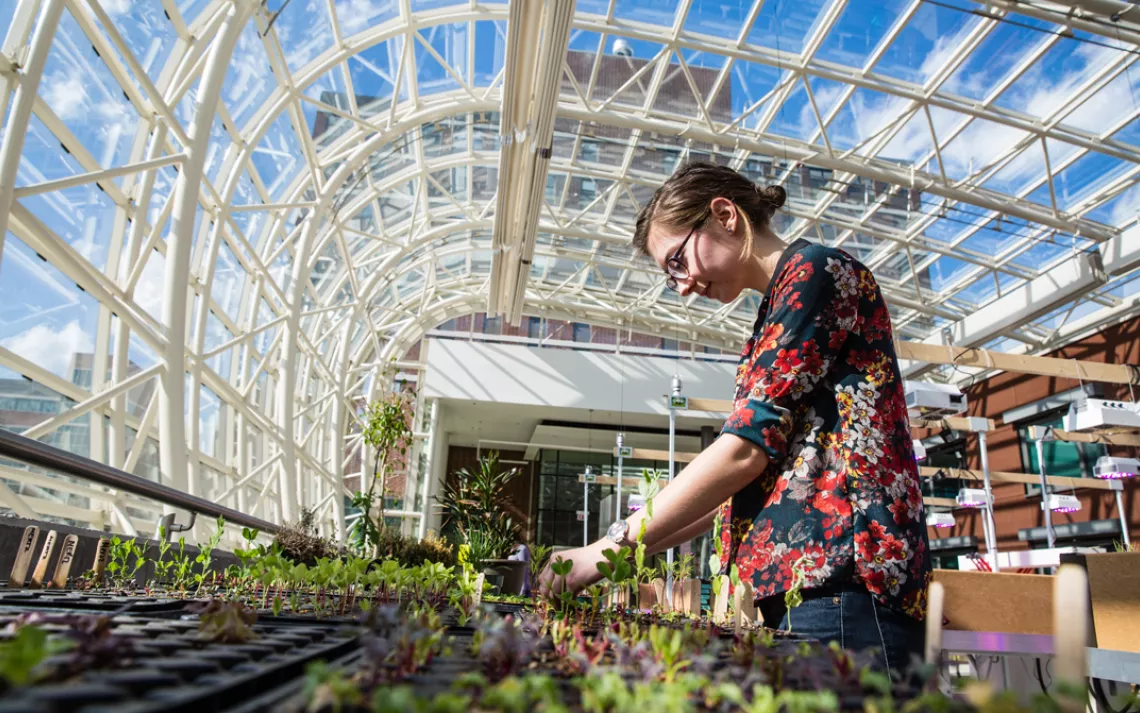
#4 LOYOLA UNIVERSITY CHICAGO
SCORE: 798.97 | CHICAGO, ILLINOIS
This Jesuit school has extensive recycling and composting programs. Its new Institute of Environmental Sustainability offers five environmental bachelor's programs (with two more coming soon), aquaponics facilities, Chicago's biggest geothermal facility, and a lab in which students learn how to make biodiesel—and soap!—from excess vegetable oil. It also has a 3,100-square-foot research greenhouse, shown above, where students learn about urban agriculture.
Photo courtesy of Loyola University Chicago
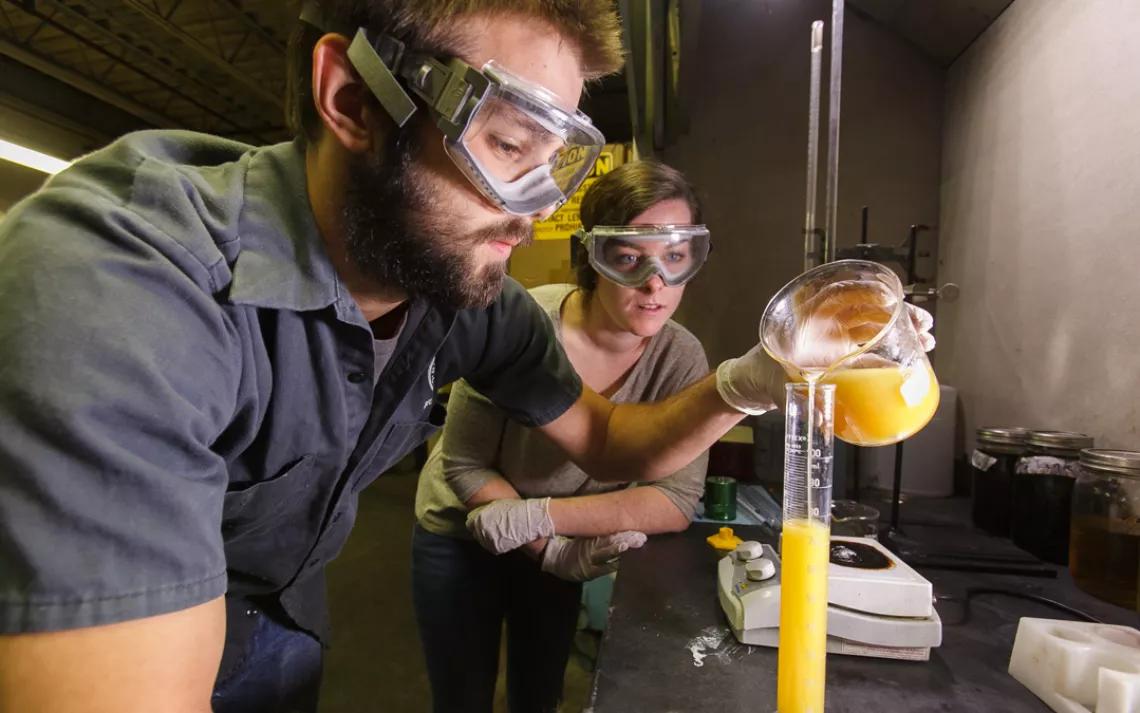
#3 DICKINSON COLLEGE
SCORE: 803.44 | CARLISLE, PENNSYLVANIA
Dickinson excels in harnessing would-be stormwater runoff with rain gardens, cisterns, native lawns, and porous pavement. The small liberal arts school also has a bicycle co-op, an organic farm that supplies the dining hall, and almost 100 eco-classes across 33 academic disciplines. Above, Dickinson students turn waste vegetable oil into biodiesel.
Photo courtesy of Carl Socolow/Dickinson College
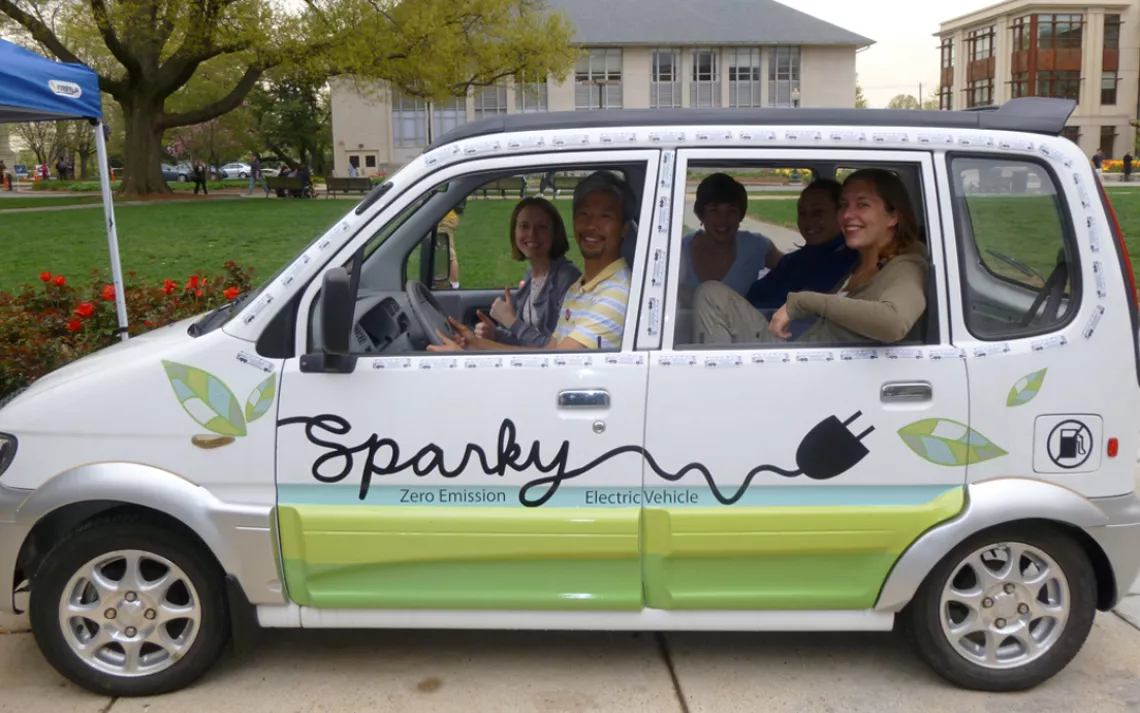
#2 AMERICAN UNIVERSITY
SCORE: 804.25 | WASHINGTON, D.C.
AU is an all-around heavyweight. Here's a tiny sampling of the huge range of eco-features on campus: D.C.'s biggest combined solar array, dozens of buildings in the process of getting LEED certified, a policy against idling cars, and the student-led Adopt-a-Tree program, which takes care of trees around D.C. The school’s future looks even brighter: By 2016, clubs won't be allowed to buy bottled water. By 2017, at least 50 percent of dining-hall fare will be from sustainable sources. And by 2020, AU will send no waste to landfills or incinerators. Above, Kiho Kim, an environmental science professor, takes students for a ride in Sparky, one of AU's 11 electric cars.
Photo courtesy of Emily Curley/American University
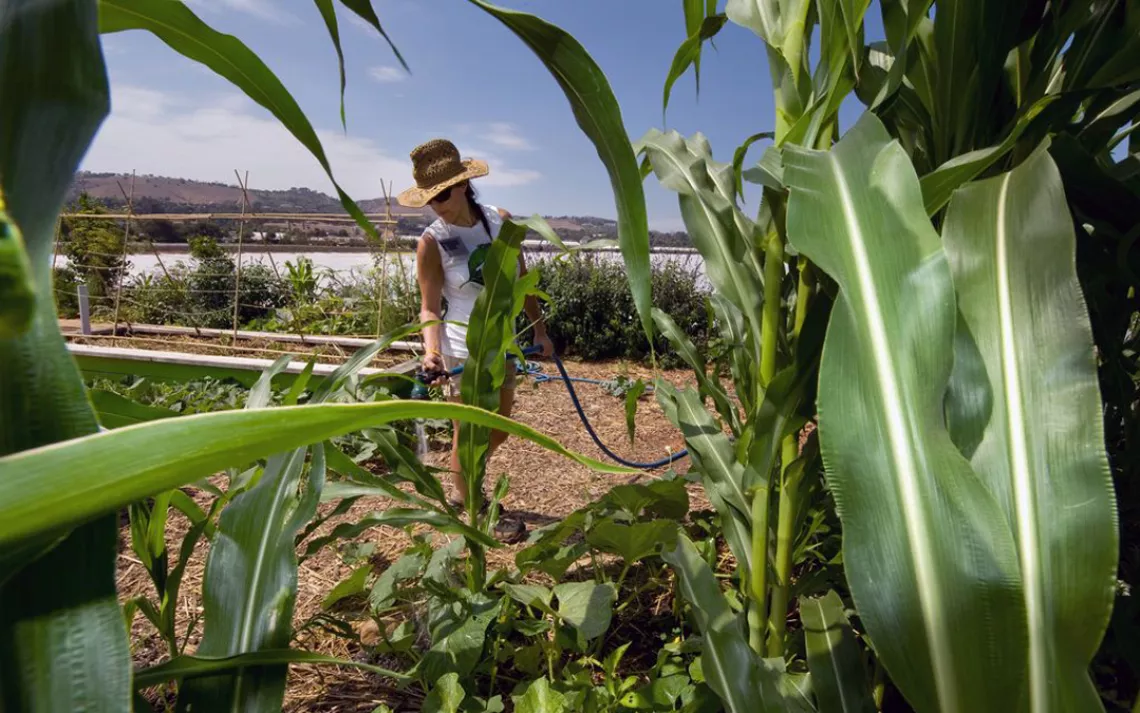
#1 UNIVERSITY OF CALIFORNIA, IRVINE
SCORE: 813.51 | Irvine, California
In 2008, UC Irvine vowed to improve its energy efficiency by 20 percent by 2020, then hit that target seven years early, making it the first U.S. school to achieve that goal. Then administrators doubled down by pledging an additional 20 percent energy reduction by 2020. Helping the matter: three on-site solar power projects and a 19-megawatt cogeneration plant with turbines powered by combustion and steam. The school's water-recycling program saves more than 210 million gallons per year. Above, a student waters vegetables during a trip to the Ecology Center in San Juan Capistrano as part of UCI's immersive Summer Institute for Sustainability Leadership program.
Photo courtesy of Steve Zylius/University of California, Irvine
Avital Andrews is Sierra's former lifestyle editor. Follow her on Twitter @avitalb.
More articles by this author The Magazine of The Sierra Club
The Magazine of The Sierra Club


